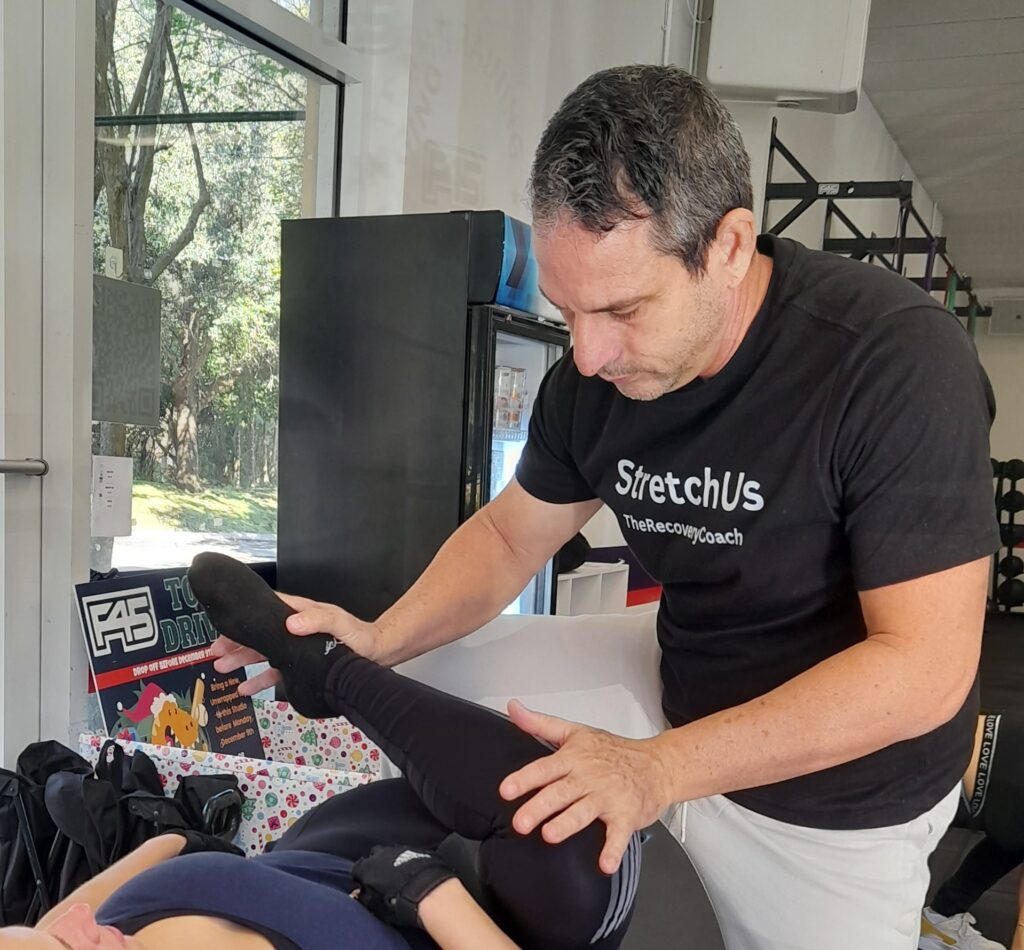By Alfredo Cabezas StretchUs
Running is more than just moving from point A to B—it’s a complex interplay between biomechanics, neuromuscular control, and ground contact forces. Research suggests that the mechanics of how a runner’s foot interacts with the ground profoundly influence muscular coordination, force production, and potential injury risk.
In David Joyce’s Sports Injury Prevention and Rehabilitation and Frans Bosch’s Strength Training and Coordination, both experts emphasize the importance of understanding ground contact mechanics and how they interact with the brain’s neuromuscular systems. This connection is critical in identifying and correcting muscle imbalances in athletes.
Frans Bosch’s theory highlights that during running, ground contact sends proprioceptive signals to the brain, enabling it to coordinate movement. However, improper signal transmission—caused by poor running mechanics or muscle imbalances—can result in compensatory movement patterns. These compensations can lead to inefficiencies and injuries over time. Impacts on the Quadratus Lumborum (QL) and Related Muscles. The QL stabilizes the pelvis and lumbar spine during movement, but compensatory overactivation can occur when other muscles in the kinetic chain fail to perform efficiently. Key outcomes include:
- Pelvic Imbalance: The QL overcompensates for weak core or gluteal muscles, pulling the pelvis into misalignment.
- Foot Internal Rotation: Faulty mechanics can result in inward foot rotation, stressing the inner thigh and groin.
- Compensatory Tension in the IT Band and Calf: The calf may externally rotate to stabilize the body, increasing strain on the knee, IT band, and glutes.
Optimizing running mechanics and reducing muscle imbalances require a comprehensive approach. Including proper technique assessment, targeted strength exercises, and neuromuscular coordination drills. Recovery strategies such as foam rolling, active rest, and assisted stretching are equally vital, especially for muscles like the quadratus lumborum (QL). Assisted stretching enhances flexibility, alleviates tension in the QL, and prevents compensatory movement patterns, promoting better posture and pain relief. Incorporating progressive loading with recovery ensures a balanced kinetic chain, minimizing injury risks while improving performance.
By understanding the science behind running mechanics, ground contact forces, and their role in muscle coordination, athletes can adopt a smarter, more individualized approach to training. Combining strength, neuromuscular coordination, and recovery strategies can reduce injury risk and enhance performance.
For a customized plan addressing your unique needs, contact StretchUs for professional guidance!
References:
- Bosch, F. (2015). Strength Training and Coordination.
- Joyce, D., & Lewindon, D. (2015). Sports Injury Prevention and Rehabilitation.
- National Strength and Conditioning Association (NSCA) guidelines on neuromuscular training.
- Studies on the role of the kinetic chain in running biomechanics (Journal of Applied Biomechanics, 2020).
